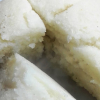Kenyan Banks Tighten Credit as Shilling Weakens

The Kenyan economy is currently navigating a period of heightened volatility in the foreign exchange market with the Shilling's performance directly impacting lending rates.
This interplay between currency value and borrowing costs highlights the intricate relationship between micro and macroeconomic factors. While broader economic activity is undeniably shaped by global market trends and inflation, the local currency's health plays a significant role. Notably, the Shilling enjoyed a period of remarkable strength between February and March, appreciating against major currencies. This positive trend even positioned it as the world's best-performing currency during that timeframe.
However, April saw a reversal of fortunes for the Shilling with increased volatility becoming the defining characteristic. As of today, the Central Bank of Kenya (CBK) reports an exchange rate of 131 units per US Dollar. Concerns linger about a potential return to the record low of 160 units witnessed earlier in 2024. Despite these apprehensions, the Shilling has maintained a relatively stable trading range of 130 to 133 against the Dollar throughout April.
In contrast to the volatility in the foreign exchange market, the CBK opted to maintain the Central Bank Rate (CBR) at 13 per cent during its April 3rd Monetary Policy Committee (MPC) meeting. This decision reflects the Committee's expectation of a continued decline in overall inflation in the near future. Lower food and fuel prices, coupled with the positive effects of the recent Shilling appreciation, support this outlook. However, the relative stability in the CBR hasn't prevented individual banks from adjusting their lending rates.
A leading Kenyan bank, for instance, announced an increase from 16.5% to 17.5% per annum on its lending rate. Additionally, the US Dollar lending rate was revised upwards from 11% to 11.75% per annum. It's crucial to note that these adjustments primarily impact borrowers with variable-rate loans while fixed-rate loans remain unaffected. The Kenyan financial landscape currently faces the challenge of balancing economic stability with responsiveness to dynamic market conditions. The recent decisions by the CBK and individual banks demonstrate the delicate nature of this balancing act.














Comments
You cannot keep kicking the…
Permalink
You cannot keep kicking the can down the road expecting a miracle to happen! The artificiality of the intervention orchestrated by GoK & the IMF in February when they pumped hundreds of millions of dollars into the Kenyan financial system is palpable - it was fake & hollow. The effect is so short lived. There’s a very high chance the Kenya shilling will once again dramatically slide against the dollar before the year ends
Economics 101 - a country’s currency can only strengthen or weaken when certain very fundamental factors are changing - balance of payments, national productivity, fiscal discipline etc
None of this was happening in order to cause the very sudden strengthening of the shilling. Truth is coming out too soon
Add new comment